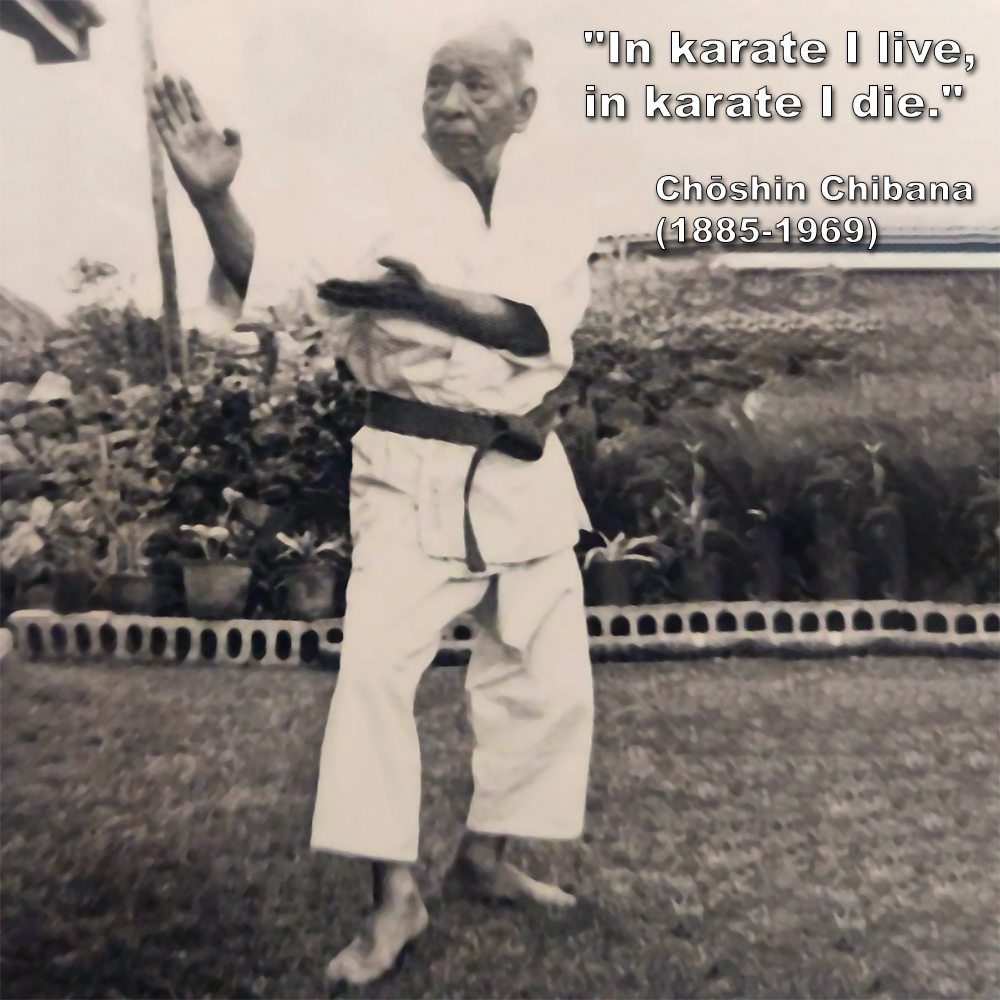
(1 minutes 40 second read)
Chōshin Chibana (1885-1969) stands as a pivotal figure in the history of Okinawan karate, earning the moniker “Last Warrior of Shuri” for his dedication and contributions to the martial arts.
.
Born in 1885, his life intertwined with the evolution of Okinawan martial arts, leaving an indelible mark on its legacy.
.
Chibana’s journey began at the tender age of 15 when he became a student of Ankō Itosu, whom some practitioners refer to as the grandfather of karate. Itosu was a pivotal figure in shaping modern karate, which was first introduced to the Okinawan school system in the early 1900’s.
.
For 13 years, he diligently trained under Itosu, mastering the techniques and philosophies of ‘Shuri-te’.
.
Following Itosu’s passing, Chibana felt a deep responsibility to preserve and share his knowledge. In 1929, he took a significant step by establishing Shorin-Ryu, the first Okinawan karate style to adopt a Japanese name. This act not only cemented his own lineage but also served as a bridge between traditional Okinawan practices and the wider martial arts world.
.
Throughout his years as a teacher, Chibana’s dojo became a haven for aspiring karate practitioners. He nurtured numerous individuals who later became revered figures in their own right, including: Arakaki Ankichi, Katsuya Miyahira, Shūgorō Nakazato, Nakama Chozo, Yuchoku Higa, Eizo Shimabukuro, Tadashi Yamashita, Joki Uema and Naonobu Ahagon, each instrumental in carrying forward the Shorin-Ryu tradition.
.
Throughout his life Chibana’s teachings emphasized not just physical prowess but also the crucial role of mental discipline, character development, and respect.
.
His dedication to karate earned him numerous accolades, and in 1968, the Emperor of Japan awarded him the ‘Order of the Sacred Treasure’ for his contribution to the preservation and development of karate.
.
Chōshin Chibana’s impact on the world of karate is undeniable. His dedication to preserving tradition while fostering innovation continues to inspire practitioners worldwide even today.
.
Despite grappling with a terminal illness, Chibana persisted in his teaching, showcasing his steadfast dedication to his craft and his students.
.
One of Chibana’s often-quoted phrases, “In karate I live, in karate I die.”, captures the essence of his life. For him, karate wasn’t just a fighting system; it was a guiding philosophy, shaping his character and enriching his existence.
.
Chibana’s impact extends far beyond his lifetime with his dedication to preserving tradition while embracing innovation. He passed away in 1969, from throat cancer, at the age of 83.
.
He never stopped training.
.
.
Photo Credit: Courtesy of Nicolás Pérez sourced from motobu-ryu-blog. Quote from the Chibana Project
